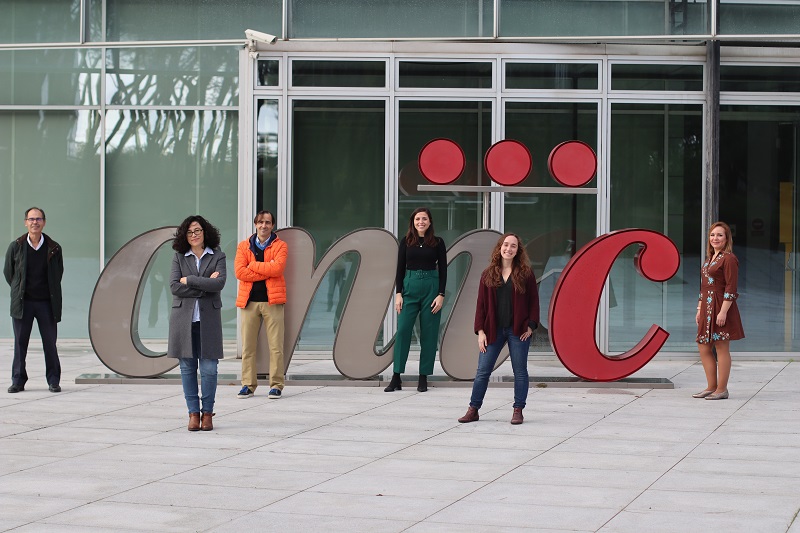Nature: CNIC scientists identify a new diagnostic and therapeutic target for cardiovascular disease
Un estudio que se publica en Nature muestra a la proteína mitocondrial ALDH4A1 como un nuevo autoantígeno implicado en los procesos de la aterosclerosis
Scientists at the Centro Nacional de Investigaciones Cardiovasculares (CNIC) have identified a mitochondrial protein as a potential marker for the diagnosis of cardiovascular disease (CVD) and as a possible target for future treatments. The study is published in the journal Nature. The project was funded with 500.000 euro by “la Caixa” Foundation, and coordinated by Ramiro.
Cardiovascular disease is the leading cause of death in the world, with most deaths from CVD caused by a heart attack or stroke. The leading underlying cause of the blood clots triggering these events is atherosclerosis, a chronic inflammatory disease that produces plaques in blood vessel wall composed of cell debris, fats, and fibrous material. Atherosclerosis manifests clinically as a thrombosis (a blood clot inside a blood vessel), which is the principal cause of acute myocardial infarction and stroke.
Atherosclerosis develops for many years without causing symptoms, and there is therefore a pressing need for new tools for diagnosis and therapy. Study leader Dr Almudena Ramiro, of the CNIC, explained that, “we know that atherosclerosis includes an immunological component and that the innate and adaptive immune systems are both involved in the origin and progression of this disease.” However, little is known about the specific response of B cells in these processes or the repertoire of antibodies these cells produce during atherosclerosis.
Now, the new study published in Nature has shown that the mitochondrial protein ALDH4A1 is an autoantigen involved in atherosclerosis. Autoantigens are molecules produced by the body that, through a variety of mechanisms, are recognized as foreign and trigger an immune response. “ALDH4A1 is recognized by the protective antibodies produced during atherosclerosis, making it a possible therapeutic target or diagnostic marker for this disease,” Ramiro said.
We know that atherosclerosis includes an immunological component and that the innate and adaptive immune systems are both involved in the origin and progression of this diseases
The study characterized the antibody response associated with atherosclerosis in mice lacking the low-density lipoprotein receptor (LDLR-/-) and fed a high-fat diet. During the study, the CNIC team collaborated with researchers at the German Cancer Research Center (DKFZ), the Spanish Cardiovascular Biomedical Research Network (CIBERCV), the Fundación Jiménez Díaz Institute for Medical Research, and the Universidad Autónoma de Madrid.
Describing the study, first author Cristina Lorenzo explained, “we found that atherosclerosis is associated with the generation of specific antibodies in the germinal centers, where B cells diversify their antibodies and differentiate into high-affinity memory B cells and plasma cells.”
To study the repertoire of antibodies produced during atherosclerosis, the research team performed a high-throughput analysis based on isolating individual B cells and sequencing their antibody genes. “Analysis of the sequences of more than 1700 antibody genes showed that mice with atherosclerosis produced a distinct antibody repertoire. The production of these antibodies allowed us to study their targets (their antigen specificity) and their functional properties,” explained Hedda Wardemann, of the DKFZ in Heidelberg.
Among the atherosclerosis-associated antibodies, the research team found that the antibody A12 was able to recognize plaques not only in the atherosclerosis-prone mice, but also in samples from patients with atherosclerosis in the carotid arteries. “Proteomics analysis showed that A12 specifically recognized a mitochondrial protein called aldehyde dehydrogenase 4 family, member A1 (ALDH4A1), identifying this protein as an autoantigen in the context of atherosclerosis,” said Lorenzo.
Ramiro added that “the study shows that ALDH4A1 accumulates in plaques and that its plasma concentration is elevated in the atherosclerosis-prone mice and in human patients with carotid atherosclerosis, establishing ALDH4A1 as a possible biomarker of the disease.”.
Ramiro added that “the study shows that ALDH4A1 accumulates in plaques and that its plasma concentration is elevated in the atherosclerosis-prone mice and in human patients with carotid atherosclerosis, establishing ALDH4A1 as a possible biomarker of the disease.”
The team also found that infusion of A12 antibodies into the atherosclerosis-prone mice delayed plaque formation and reduced the circulating levels of free cholesterol and LDL, suggesting that anti-ALDH4A1 antibodies have therapeutic potential in the protection against atherosclerosis. “These results,” explained Ramiro, “broaden our knowledge of the humoral response during atherosclerosis and highlight the potential of ALDH4A1 as a new biomarker and of A12 as a therapeutic agent for this disease.”
The scientists conclude that their study opens the path to new diagnostic and therapeutic interventions in cardiovascular disease.
The project was funded by the “la Caixa” Foundation, the Asociación Española Contra el Cáncer (AECC), the Ministerio de Asuntos Económicos y Transformación Digital, and the Ministerio de Ciencia, Innovación y Universidades.











